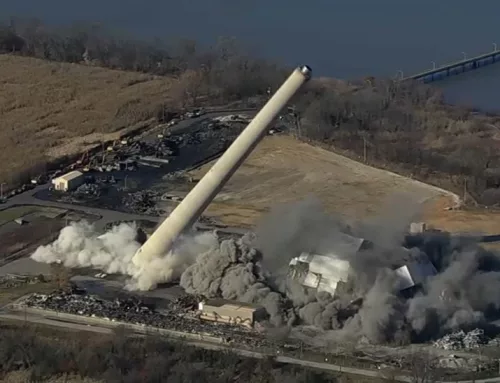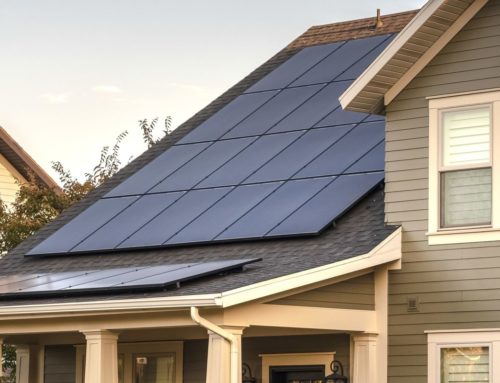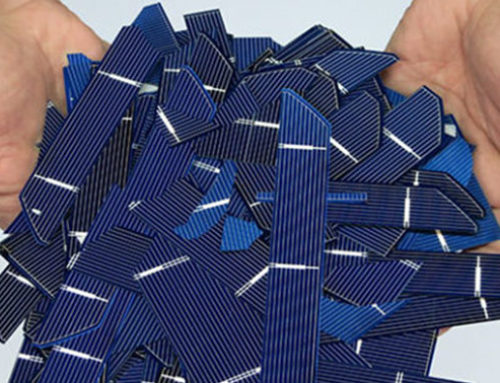New Jersey proposes energy storage incentives to reach 2GW deployment target

October 5, 2022
The New Jersey Board of Public Utilities has proposed policies to promote and incentivize the installation of batteries. Split between essentially large scale and small scale batteries, the program will provide incentives to residential battery owners based on the ability of a utility to operate the battery to both stabilize and provide power to the grid.
Most tend to think of batteries as being able to provide backup power to a home in the event of a power outage. While this is certainly one of the major functions that batteries provide, batteries can provide other value to the grid and grid operators – for example injecting power into the grid to stabilize it or to reduce spikes in electricity demand.
Programs that harness the power of many small residential batteries, known as virtual power plants (VPPs), are currently being piloted. We believe that in the future, most homes will have a battery and be subscribed to a VPP program that will allow homeowners to buy or sell electricity, but also to be compensated by the grid operator in return for use of their battery to help stabilize the grid.
Home solar and batteries are the first step in the energy revolution. See if they’re right for you by getting started with a free solar assessment.
Here’s a link to the original article or you can read the full text below. Please check back for important updates to this developing program.
The New Jersey Board of Public Utilities has proposed a number of policies to incentivise the deployment of standalone energy storage, to help hit a 2GW target.
The US state has statutory mandates for deployment, of 600MW by the end of 2021 and 2,000MW by 2030, though only 497MW has been deployed and 420MW of that is a pumped hydro facility (as fas as the Board is aware).
But, it said, energy storage investments that would save bill-payers money often do not get built because developers “…generally can only monetise a fraction of the benefits they produce”.
The Board is proposing to create separate energy storage programmes creating incentives for front-of-meter (FTM) and behind-the-meter (BTM) energy storage projects connected to New Jersey’s electric distribution companies (EDC).
The incentives will only apply to projects going online after the programme is implemented. FTM and BTM are being grouped into two market segments; Grid Supply and Distributed/Customer Level, respectively.
At least 30% of the incentive will be in the form of a fixed annual incentive, paid in US$/kWh of energy storage capacity continent on up-time performance metrics, the Board said.
It will be established through a declining block structure to establish a market-based incentive while also providing the industry clear insights into the incentive value for energy storage resources. There will be different pricing structures for each market segment.
The remainder of the incentive programme will be a pay-for-performance mechanism.
For Grid Supply projects, payment will be based on the amount of carbon emissions abated through operation of the energy storage device. This will be calculated using the marginal carbon intensity of the wholesale electric grid (set by grid operator PJM) at the time the energy is discharged, minus the carbon intensity of the energy drawn during the charging interval.
In essence, this means the more renewable load shifting that the energy storage unit does, the more it will be paid. While energy storage units today do as much as 6GWh of load shifting a day in the California market as of February, little of this has been shifting renewables.
For the Distributed/Customer Sited segment, payment will be based on the successful injection of power into the distribution system when called upon by the EDC during certain performance
hours. A portion of the Distributed storage incentive will also be reserved for projects located in or directly serving overburdened communities.
Eligibility for the incentive programmes will be technology-neutral and based only on meeting functional
requirements in a cost-effective manner, the Board added.
The Board is also proposing that private investors be allowed to own and operate the energy storage devices, allowing them to stack revenues from multiple sources.
These would include the wholesale electricity market for Grid Supply projects and, for the Distributed segment, utilising energy storage to actively manage their energy usage to reduce electricity costs or to participate in a Distributed Energy Resource (DER) aggregation service.
The programme is designed to provide ratepayers in the state with a variety of benefits, the Board said. These include carbon savings, hosting capacity improvements and improving system resilience.
Read the whole Straw Proposal, contained in the ‘In the matter of the New Jersey Energy Storage Incentive Program’ notice here.
New Jersey proposes energy storage incentives to reach 2GW deployment target

October 5, 2022
The New Jersey Board of Public Utilities has proposed policies to promote and incentivize the installation of batteries. Split between essentially large scale and small scale batteries, the program will provide incentives to residential battery owners based on the ability of a utility to operate the battery to both stabilize and provide power to the grid.
Most tend to think of batteries as being able to provide backup power to a home in the event of a power outage. While this is certainly one of the major functions that batteries provide, batteries can provide other value to the grid and grid operators – for example injecting power into the grid to stabilize it or to reduce spikes in electricity demand.
Programs that harness the power of many small residential batteries, known as virtual power plants (VPPs), are currently being piloted. We believe that in the future, most homes will have a battery and be subscribed to a VPP program that will allow homeowners to buy or sell electricity, but also to be compensated by the grid operator in return for use of their battery to help stabilize the grid.
Home solar and batteries are the first step in the energy revolution. See if they’re right for you by getting started with a free solar assessment.
Here’s a link to the original article or you can read the full text below. Please check back for important updates to this developing program.
The New Jersey Board of Public Utilities has proposed a number of policies to incentivise the deployment of standalone energy storage, to help hit a 2GW target.
The US state has statutory mandates for deployment, of 600MW by the end of 2021 and 2,000MW by 2030, though only 497MW has been deployed and 420MW of that is a pumped hydro facility (as far as the Board is aware).
But, it said, energy storage investments that would save bill-payers money often do not get built because developers “…generally can only monetise a fraction of the benefits they produce”.
The Board is proposing to create separate energy storage programmes creating incentives for front-of-meter (FTM) and behind-the-meter (BTM) energy storage projects connected to New Jersey’s electric distribution companies (EDC).
The incentives will only apply to projects going online after the programme is implemented. FTM and BTM are being grouped into two market segments; Grid Supply and Distributed/Customer Level, respectively.
At least 30% of the incentive will be in the form of a fixed annual incentive, paid in US$/kWh of energy storage capacity continent on up-time performance metrics, the Board said.
It will be established through a declining block structure to establish a market-based incentive while also providing the industry clear insights into the incentive value for energy storage resources. There will be different pricing structures for each market segment.
The remainder of the incentive programme will be a pay-for-performance mechanism.
For Grid Supply projects, payment will be based on the amount of carbon emissions abated through operation of the energy storage device. This will be calculated using the marginal carbon intensity of the wholesale electric grid (set by grid operator PJM) at the time the energy is discharged, minus the carbon intensity of the energy drawn during the charging interval.
In essence, this means the more renewable load shifting that the energy storage unit does, the more it will be paid. While energy storage units today do as much as 6GWh of load shifting a day in the California market as of February, little of this has been shifting renewables.
For the Distributed/Customer Sited segment, payment will be based on the successful injection of power into the distribution system when called upon by the EDC during certain performance
hours. A portion of the Distributed storage incentive will also be reserved for projects located in or directly serving overburdened communities.
Eligibility for the incentive programmes will be technology-neutral and based only on meeting functional
requirements in a cost-effective manner, the Board added.
The Board is also proposing that private investors be allowed to own and operate the energy storage devices, allowing them to stack revenues from multiple sources.
These would include the wholesale electricity market for Grid Supply projects and, for the Distributed segment, utilising energy storage to actively manage their energy usage to reduce electricity costs or to participate in a Distributed Energy Resource (DER) aggregation service.
The programme is designed to provide ratepayers in the state with a variety of benefits, the Board said. These include carbon savings, hosting capacity improvements and improving system resilience.
Read the whole Straw Proposal, contained in the ‘In the matter of the New Jersey Energy Storage Incentive Program’ notice here.
Have a question about the future of batteries or battery incentive programs? Send us a message and we’ll answer ASAP.
Have a question about the future of batteries or battery incentive programs? Send us a message and we’ll answer ASAP.








